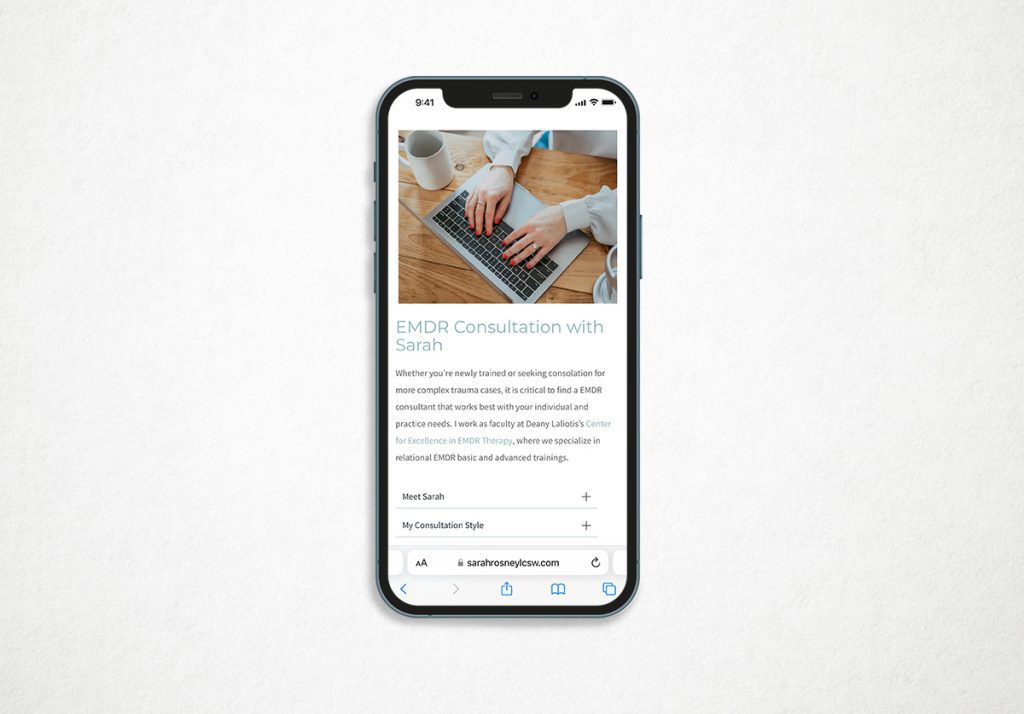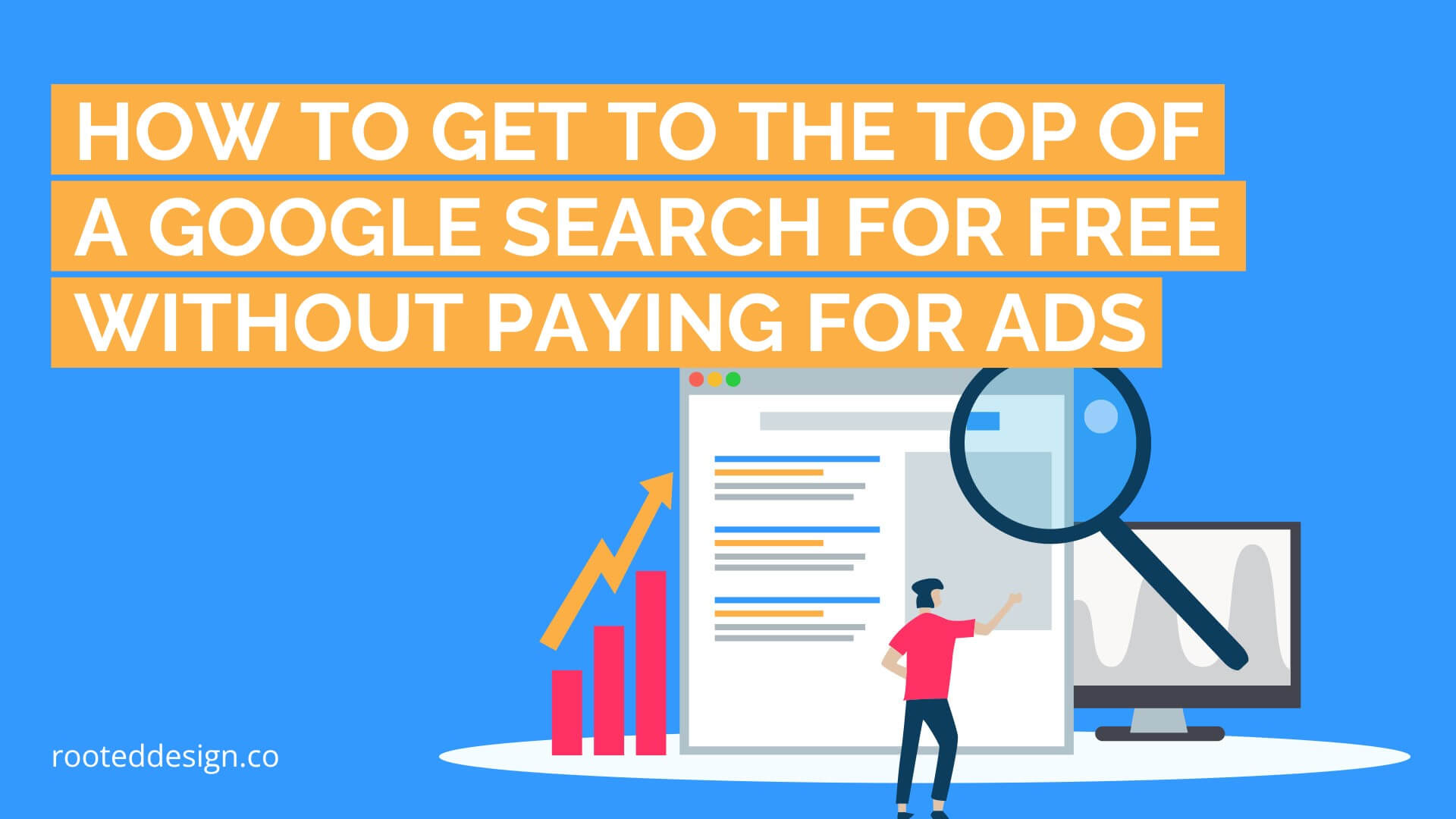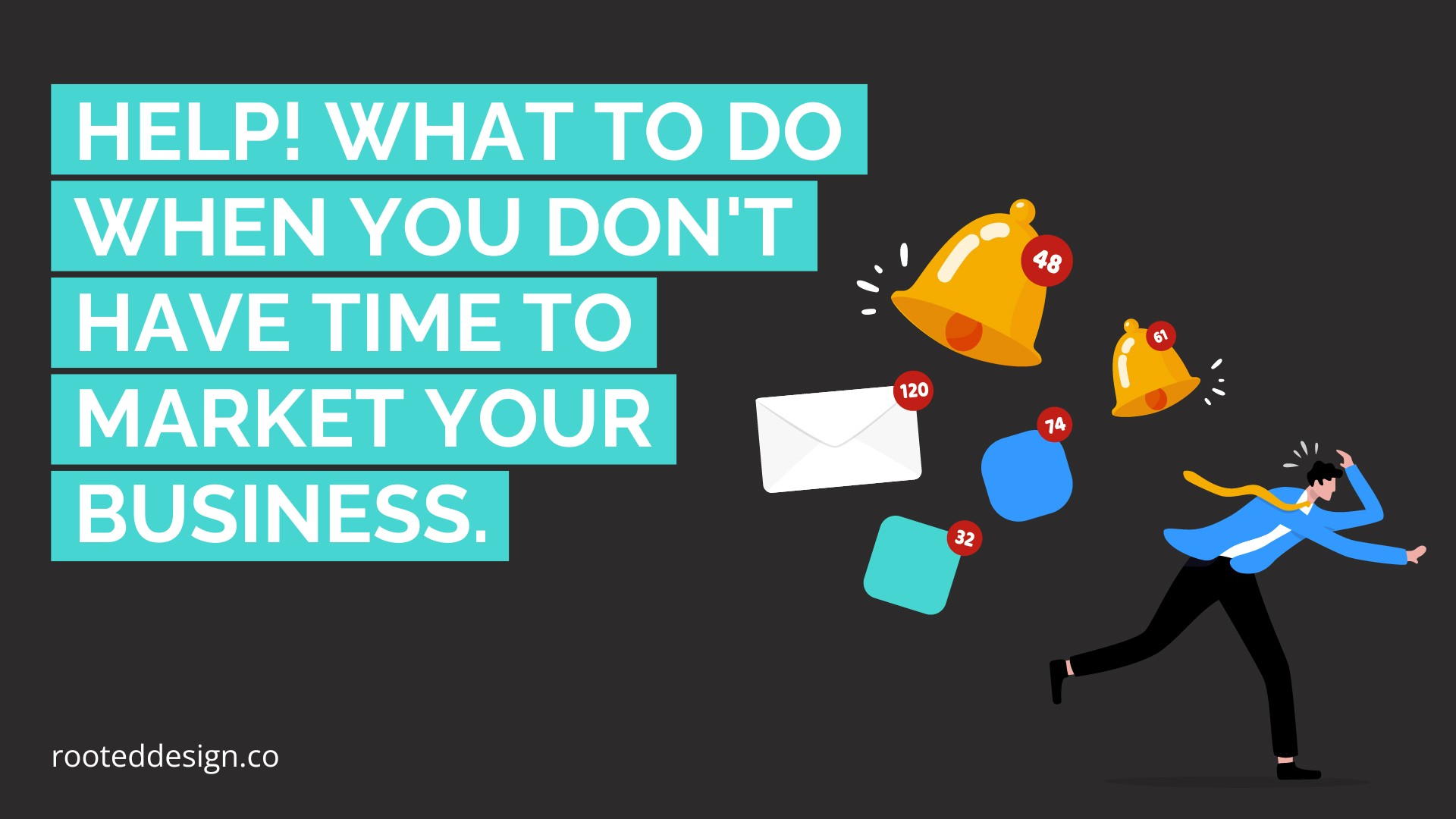In this post, we will walk you through how a Google Search works and explain exactly what you need to do to get to the top of a Google Search.
The Benefits of Ranking High on Google and Why Getting to the Top of a Google Search Matters
Over 4.3 billion people use Google every day. That’s a gigantic audience for any business, but the challenge lies in cutting through the noise and getting them to see you. The key? Landing in the coveted top spots of Google’s search results page, also known as the SERP.
Ranking high on Google isn’t just a vanity metric. It translates into real results for your business. Here’s why:
The top five results on a Google search page hold immense power. They capture a staggering 70% of all clicks. The higher you rank, the more likely users are to find and click on your website, driving significant traffic your way.
But that’s not all. Unlike paid ads that vanish when you stop spending, organically ranking content like blog posts and videos has lasting power. This content can continue to attract visitors for months or even years, offering long-term value and a steady stream of potential customers.
The best part? Those clicks can convert into real results. By ranking high, you’re attracting users who are already interested in what you offer. This increases your chances of converting them into paying customers, bringing your business goals to life.
Intrigued by the power of high Google rankings? Stay tuned to learn the first step in unlocking the secrets of Google’s algorithm and climbing the search ladder!
How Google Discovers and Ranks Websites
Ever wondered how your website ends up on a Google search page? It all boils down to a three-step process:
- Crawling the Web: Imagine tireless explorers venturing across the vast digital landscape. These are Google’s bots, also known as spiders. They’re constantly searching for new and updated web pages, diligently downloading text, images, and videos to understand what each page offers.
- Building the Knowledge Base: Once the crawlers gather their findings, Google examines the data from the discovered URLs. This involves analyzing text content, images, and any other media on each page. All this information is then stored in a massive database called the Google index, essentially a library of the web.
- Matching Up with Your Search: When you type a query into Google, the magic happens. Google’s search algorithm analyzes your search terms and taps into the Google index. It then uses various ranking factors to determine which pages in the index best match your search intent. These factors consider everything from the relevance of the content to the user-friendliness of the website. Ultimately, the algorithm serves up the most relevant and valuable results at the top of the search page.
1. What are Keywords?
Keywords are like the secret code that helps search engines, like Google, understand what your website is about. When someone types a question or topic into the search bar, the search engine looks for websites that contain those keywords. It’s like giving Google a map to find your website among the vast digital landscape. To start ranking high on Google, you need to identify the keywords that your target audience is likely to use when searching for your products or services. These keywords should be relevant to your business and reflect what you offer.
What is Search Intent and How Does It Relate to Keyword Research?
Imagine you walk into a bookstore looking for a new book to read. You might search for something like “thrilling mystery novel” or “heartwarming romance story.” Your search term reflects your intent – what you’re hoping to find.
Search intent works the same way online. When someone types a question or topic into Google, they have a specific goal in mind. Maybe they want to learn more about a product, find the best place to buy it, or simply get an answer to a burning question.
Understanding search intent is crucial when figuring out your keywords because it helps you match your content with what users are looking for. If someone is searching for “best commercial cleaning company in Atlanta,” they’re probably not interested in reading a blog post about tips to get a stain out of a rug. By aligning your keywords with the search intent of your target audience, you increase the chances of your website ranking high in Google searches and attracting valuable traffic.
Now that you have figured out your search intent, it’s time to find your keywords.
How to Track Your Keywords
There are several free and paid tools out there that can help you discover relevant keywords.
- Google Search Console: This free tool by Google shows you the keywords your website is already ranking for. It breaks down the phrases and words people use in a search to find your website, how many clicks it gets, and the average position of that phrase/word. Bonus points because this tool can link to your Google Analytics Account.
- Keyword Planner: Is another free tool by Google. This was specifically designed for keyword research related to paid advertising (PPC), but it can also be a good source for SEO ideas.
- Ahrefs: Has free and paid plans but if you are just tracking your own website, the free plan will give you great insights. If you want to do some advance searches, you will need to pay for a plan.
- Semrush: Also has free and paid plans. They give you a lot of information for free but if you want to do some advance searches, you will need a paid plan.
The benefits of a paid plan are they will break down your keywords and tell you things like your SERP feature (what shows in search results), Volume (an idea of how many searches there are for the word/phrase), Keyword Difficulty (how hard it will be to rank for that word/phrase), Cost Per Click (if you were running paid ads), and your average position for that word/phrase.
The other benefit of using either Ahrefs or Semrush even on their free plan is they give you a lot of information about your website. You will need to link your Google Analytics and Google Search Console account so they can pull information but we promise, it’s worth it. Some of the information you will learn is errors that is preventing your website from ranking (SEO errors), how many pages rank on Google, your average ranking position, and your backlinks.
Don’t Forget About Long-Tail Keywords
Okay, so we’ve talked about finding those perfect keywords that will help you climb to the top of a Google search. But here’s a little secret – don’t forget about long-tail keywords!
Long-tail keywords are longer, more specific phrases that people use when they’re really honing in on what they want. They may not have as high search volume as shorter, more general keywords, but they can be super valuable because they often indicate someone who is closer to making a decision or purchase.
For example, instead of just targeting the keyword “commercial cleaning,” you could also target long-tail keywords like “best commercial cleaning company in [your city]” or “eco-friendly commercial cleaning services.”
2. Create High-Quality Content That Adds Value
When it comes to climbing to the top of a Google search, creating high-quality content that adds value is key. You want to write for a human reader, not just for the search engine bots.
Think about what your target audience is looking for and how you can provide them with valuable information or solutions. Make sure your content is informative, engaging, and well-written. Include relevant keywords naturally throughout your content, but don’t stuff them in just for the sake of SEO.
Remember, Google’s main goal is to provide users with the best possible results for their queries. So if you focus on creating content that truly helps and resonates with your audience, you’re more likely to climb up those search rankings.
What are Internal Links?
Internal links are like the secret passageways of your website. They’re the links that connect one page on your site to another page on the same site. Think of them as little signposts guiding your visitors from one piece of content to another.
But why are internal links so important? Well, not only do they help users navigate your site and find more of your awesome content, but they also play a big role in improving your search engine ranking.
When Google’s bots crawl through your site, they follow these internal links to discover new pages and understand the structure of your website. The more internal links you have pointing to a particular page, the more importance Google gives to that page. It’s like giving it a big virtual thumbs-up!
How Does Long-Tail Keywords Work with High-Quality Content?
Picture this – someone is searching for “best cleaning company.” That’s a pretty broad keyword with lots of competition. But if they refine their search to something like “best commercial cleaning company with English-speaking employees” now we’re talking long-tail keyword territory. These specific phrases show that the person knows exactly what they want, and they’re more likely to convert into a customer.
So, how do long-tail keywords work with high-quality content? Well, when you sprinkle these specific phrases throughout your blog posts, product descriptions, and landing pages, you’re not only targeting a more specific audience, but you’re also providing valuable information that directly addresses their needs. This combination of long-tail keywords and high-quality content can help you climb to the top of a Google search by showing the search engine that your website is relevant and valuable to users.
How Do I Know What Type of Content My Target Audience Is Interested In
One great tool that can help you figure out the type of content your target audience is interested in is using a tool called SparkToro. This platform allows you to discover what your audience is talking about, sharing, and engaging with online. You can see which websites they visit, what social media platforms they’re active on, and even what podcasts they listen to. By using SparkToro, you can get valuable insights into your audience’s interests and preferences.
Another way to know what your target audience is interested in is by simply asking them! Conduct surveys or polls on social media, send out email questionnaires, or engage in conversations with your customers to get a better understanding of what they’re looking for.
Once you have a good grasp on what your target audience is interested in, you can tailor your content to meet their needs and preferences. Remember, providing valuable and relevant content is key to winning over both your audience and search engines.
3. Implement On-page SEO Techniques to Improve Your Website’s Visibility
Optimize Your URLs
When it comes to URLs, you want to make sure they are clear, concise, and contain relevant keywords. This not only helps search engines understand what your page is about but also makes it easier for users to know what to expect when they click on the link.
For example, instead of having a URL like www.yourwebsite.com/page1234, you could optimize it to something like www.yourwebsite.com/best-commercial-cleaning-services. See the difference? The optimized URL gives a clear indication of what the page is about and includes keywords that users might be searching for.
Optimize Your Meta Tags (Title and Page Description)
Let’s talk about optimizing your meta tags – specifically your title and page description. These little snippets of text might seem small, but they play a big role in helping your website climb to the top of a Google search.
What is a title tag? A title tag is the headline that shows up on search engine results pages (SERPs). It’s like the first impression for users, so you want it to be catchy and informative. Make sure to include relevant keywords that accurately describe the content on your page. And don’t forget to keep it under 60 characters so it doesn’t get cut off in search results!
Your page description or meta description tag is the brief summary that appears underneath the title tag on SERPs. While meta descriptions don’t directly impact your website’s ranking, they do influence whether or not users click on your link. So, it’s important to craft a compelling and informative description that entices users to visit your site. Make sure to incorporate relevant keywords and keep it under 160 characters.
By optimizing your meta tags, you’re providing search engines with valuable information about the content on your page, which can help improve your website’s visibility and ultimately drive more traffic to your site.
Improve your anchor text for better results.
Optimizing your anchor text is another important aspect of improving your website’s visibility in search results. But first, what exactly is anchor text? It’s the clickable text in a hyperlink that directs users to another webpage.
When optimizing your anchor text, you want to make sure it accurately describes the content on the linked page. This not only helps users understand what they can expect when they click on the link but also provides valuable information to search engines about the relevance of the linked page.
For example, instead of using generic anchor text like “click here” or “learn more,” try to use descriptive phrases that include relevant keywords. So, if you’re linking to a page about the best commercial cleaning services, your anchor text could be something like “best commercial cleaning services in your area.” This not only gives users a clear idea of what they can expect when they click on the link but also helps search engines understand the context of the linked page.
Improve Page Load Speed
The amount of time it takes for your website to load can impact your website’s visibility in search results. Picture this – you’re searching for something online and you click on a link, only to be met with a slow-loading page. Frustrating, right? Well, the same goes for your website visitors.
When your website takes ages to load, not only do users bounce off your site faster than you can say “page speed,” but search engines like Google also take notice. In fact, Google considers page speed as one of the factors that determine your website’s ranking in search results.
There are a few things you can do to improve your website’s page load speed. First, optimize your images and videos by compressing them without sacrificing quality. You can also enable browser caching, which stores certain elements of your website on users’ devices so they don’t have to be downloaded every time they visit your site. Additionally, consider reducing the number of plugins and scripts on your site, as they can slow down loading times.
By taking steps to improve your website’s page load speed, not only will you provide a better user experience for visitors, but you’ll also increase the likelihood of climbing to the top of a Google search.
Make Sure Your Website is Mobile Friendly

So, you’ve optimized your meta tags and anchor text, and you’ve improved your page load speed. What’s next on the list to ensure your website climbs to the top of a Google search? Making sure your website is mobile-friendly.
In today’s digital age, more and more people are using their mobile devices to browse the internet. Whether they’re searching for information, shopping online, or just browsing social media, users expect websites to be responsive and easy to navigate on their smartphones and tablets.
Google recognizes this shift in user behavior and prioritizes mobile-friendly sites in its search results. In fact, Google now uses mobile-first indexing, which means it primarily uses the mobile version of a website for indexing and ranking. This makes having a responsive website crucial for ranking well in Google searches.
To ensure your website is mobile-friendly, you can use Google’s Mobile-Friendly Test tool to check if your site meets the necessary criteria. Additionally, consider using a responsive design that automatically adjusts the layout and content based on the screen size of the device being used. This ensures that your website looks and works well across all platforms.
4. Get Backlinks
What exactly are backlinks? They are basically links from other websites that point back to your site and they matter because they help you get a higher ranking on Google. Think of backlinks as digital votes of confidence for your website. The more quality backlinks you have from reputable sites, the more search engines like Google see your site as trustworthy and relevant.
So how can you get those coveted backlinks without breaking the bank? One way is to create high-quality content that others will want to link to naturally. Whether it’s an informative blog post, a helpful infographic, or a useful tool, creating valuable content is key to attracting backlinks.
You can also reach out to other website owners and offer to guest post on their site, providing a link back to your own website in return. Additionally, participating in online communities and forums related to your industry can help you build relationships with other website owners who may be willing to link back to your site.
Another strategy is to leverage social media platforms to share your content and encourage others to link back to it. By creating engaging and shareable content, you increase the chances of it being linked to by other websites.
Ultimately, getting quality backlinks takes time and effort, but the payoff in terms of improved search rankings can be well worth it.
5. Work on Your Google Business Profile
Now, let’s talk about another key factor in boosting your SEO rankings: your Google Business Profile.
Your Google Business Profile is like your digital storefront on Google. It’s the first thing potential customers see when they search for your business online and it’s important to make sure it’s accurate, up-to-date, and engaging.
Start by claiming and verifying your business on Google My Business. This allows you to control the information that appears in search results, such as your address, phone number, hours of operation, and reviews. Make sure all this information is correct and consistent across all platforms.
Additionally, regularly updating your Google Business Profile with new photos, posts, and offers can help improve your visibility in local search results. Google rewards businesses that are active and engaged with their audience by boosting their rankings.
Encourage satisfied customers to leave reviews on your Google Business Profile. Positive reviews not only build trust with potential customers but also signal to Google that your business is reputable and worth promoting in search results.
Lastly, make sure your website is linked to your Google Business Profile. This helps Google associate your website with your business and can improve your overall SEO rankings.
By optimizing your Google Business Profile and actively managing it, you can significantly boost your local SEO rankings and increase the chances of appearing at the top of a Google search for free. Remember, local SEO is all about relevance, proximity, and prominence. By ensuring your Google Business Profile is complete and up-to-date, you are increasing your chances of showing up in local search results when potential customers are looking for businesses like yours in their area.
Learn how you can boost your Google Business Profile with these 10 tips.
6. Developing an SEO strategy is essential for online visibility and success.
Now that you’ve learned about search engine optimation, it’s time to create a strategy to boost your ranking. The first thing you need to do is run an SEO audit of your website and work on correcting the errors.
If you don’t know how to run an audit, we can run one for you for FREE!
After you have corrected your SEO errors, we recommend focusing on on-page SEO or number 3 in this blog post.
The last thing you should focus on is your content strategy. This includes all the text on your website and blog posts. Yes, a blog is very important to your website as it creates more ways for customers to find your business online.
If you focus on creating one blog post a month or rewriting the content on one webpage a month, you will slowly start seeing your website ranking higher and higher. Remember SEO is a long game and could take months to see improvements.
Still need SEO help? We can help your business get found online! Book a quick call with our team to see if we can help you.


